Machine translation is all about using computers to translate text from one language to another. While it’s been around for decades, it’s only recently become a household name. The game changed in the 1990s when companies like IBM introduced statistical models to enhance translation accuracy, and Google popularized it by making multilingual knowledge widely accessible.
The big leap came with Neural Machine Translation (NMT), powered by AI. Unlike older methods, NMT dives into the context and meaning behind words, creating translations that are not only accurate but also sound natural. This advancement has made it easier for businesses to handle routine documents, summarize large texts, and save time.
In this guide, we’ll dive deeper into what NMT is all about and explore some of the best tools you can use to bring its power into your workflow. Let’s start discuss!
What is Neural Machine Translation and how does it work?

Neural machine translation (NMT) is an approach to machine translation that uses artificial neural networks, particularly deep learning models, to translate text from one language to another. NMT has gained significant popularity and has shown promising results in improving the fluency and accuracy of machine translations.
The basic architecture of a neural machine translation system consists of an encoder-decoder framework. Here’s how it works:
- Encoder: the encoder component takes the input sentence in the source language and processes it word by word or subword units. Each word or unit is represented as a numerical vector, known as an embedding. The encoder’s task is to capture the semantic and syntactic information of the source sentence and encode it into a fixed-length vector representation, often referred to as the “thought vector” or “context vector.” Recurrent Neural Networks (RNNs) or Transformer models are commonly used as encoders.
- Decoder: the decoder component takes the encoded vector representation from the encoder and generates the translated sentence in the target language. Similar to the encoder, the decoder also uses RNNs or Transformer models. At each step, the decoder generates a probability distribution over the vocabulary of the target language and chooses the most likely word or unit as the next translation. The decoder’s output at each step is fed back as input for the next step, allowing for the generation of sequential translations.
- Training: neural machine translation models are trained on large parallel corpora, which are collections of aligned sentences in the source and target languages. During training, the model learns to minimize the difference between its predicted translations and the reference translations in the training data. This process involves optimizing the model’s parameters using techniques like backpropagation and gradient descent.
- Attention mechanism: one key component in NMT is the attention mechanism. Attention allows the model to focus on different parts of the source sentence during translation, enabling it to capture long-range dependencies and improve translation quality. The attention mechanism assigns weights to the words in the source sentence, indicating their importance for each step of translation in the decoder.
- Inference: during the inference phase, the trained NMT model is used to translate new, unseen sentences. The encoder processes the input sentence, and the decoder generates the translated output word by word or unit by unit. The decoding process utilizes beam search or other search algorithms to explore multiple translation possibilities and select the most probable translation based on the model’s learned probabilities.
Neural machine translation has shown significant improvements over previous rule-based or statistical machine translation approaches. It can better handle linguistic nuances, long-range dependencies, and produce more fluent and natural-sounding translations.
Should you use machine translation software for your website?

There are several reasons why you should use machine translation software for your website. Here are some points why you should use neural translation software.
- Accuracy: Machine translation software has undergone significant development, but it may still not provide the same level of accuracy as human translation, especially for complex or nuanced content. If your website requires precise and high-quality translations, especially for important information or customer-facing content, it may be better to choose professional human translation.
- Target audience: If your website serves a global audience and you need to provide basic translations for various languages, machine translation can be a convenient and cost-effective option. It can help visitors understand the general meaning of your content, although some linguistic errors may still occur.
- User experience: Content translated by machines can sometimes sound unnatural or robotic, which can affect the user experience. Poorly translated content can give a negative impression of your brand or confuse visitors. If providing a seamless and positive user experience is important for your website, human translation may be a better choice.
- Budget and resources: Machine translation software can be a more affordable option, especially for businesses with limited budgets or those needing to handle large volumes of content. It offers faster response times and can be cost-efficient for basic translations. However, it’s important to note that maintenance, post-editing, and quality control may require additional resources.
- Scalability: If you have a website with a continuously growing volume of content, machine translation software can provide easier scalability. You can quickly translate and update new content without waiting for human translation time or experiencing delays in launching new content.
- Consistency: Machine translation can provide a high level of consistency in translated content. If you have content that needs to be translated consistently, such as user guides, policies, or instructions, machine translation software can help ensure that the same terms and phrases are translated consistently across your website.
- Time savings: By using machine translation software, you can save time in the translation process. You don’t have to wait for human translator response times or schedule translations. You can translate content quickly and get instant results.
- Automatic updates: Machine translation software is often updated and improved by developers. By using machine translation software, you can take advantage of these updates automatically without having to manually upgrade or pay additional fees.
- Real-time translation: Some machine translation software supports real-time translation, allowing visitors to your website to translate content directly as they access it. This can enhance the international user experience and help visitors better understand the content.
Those are some reasons why you might consider using neural machine translation software. Next, we will discuss the neural machine translation software options that can be used.
The 6 best Neural Machine Translation software for websites
Machine translation translates text from one source language into another target language using computer software to make things simple. There are various kinds of machine translation, and we will go through them in more detail in the following section.
Google Translation AI
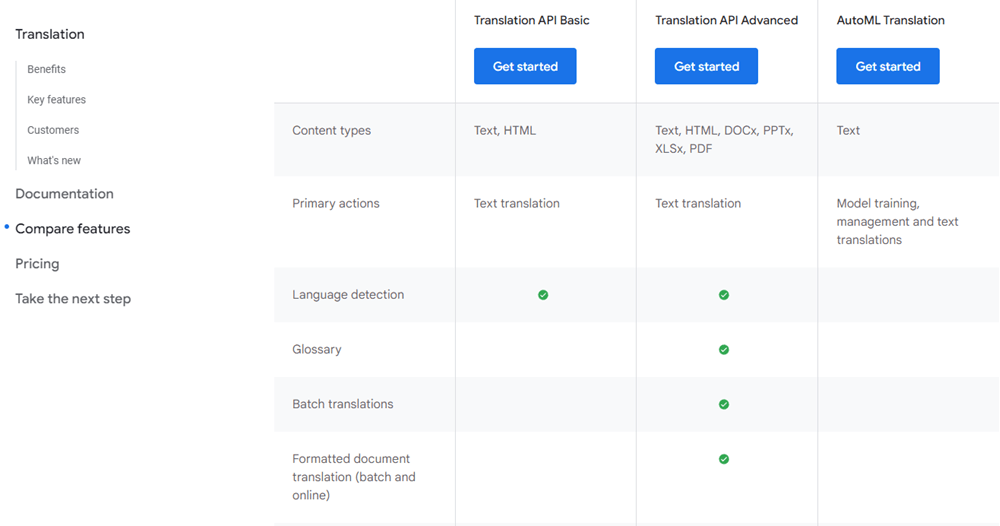
All of us have utilized Google Translate at some point in our lives. The lack of qualified translators has aided millions of individuals in communicating. The nicest thing about Google Translate is that a word, sentence, or paragraph is typically translated accurately and quickly for no cost. Although it might not be entirely correct, it provides a general understanding of a foreign language.
In 2006, Google Translate was launched. It only supported English and Arabic at that time. Since then, it has advanced significantly and can translate numerous languages! (100+)
Five hundred million people use the service, according to reports on the Google Translate site. On the other hand, there were hundreds of users when this service first began.
What is called “Google Translation AI” is just the professional version of the translation API that you’ll use for your website, instead of using the browser translation. The quality is significantly better. Price is $20 per billion of characters. Currently it is known as being the best on the market and this is the one we’re using on Linguise!
DeepL Pro Translator
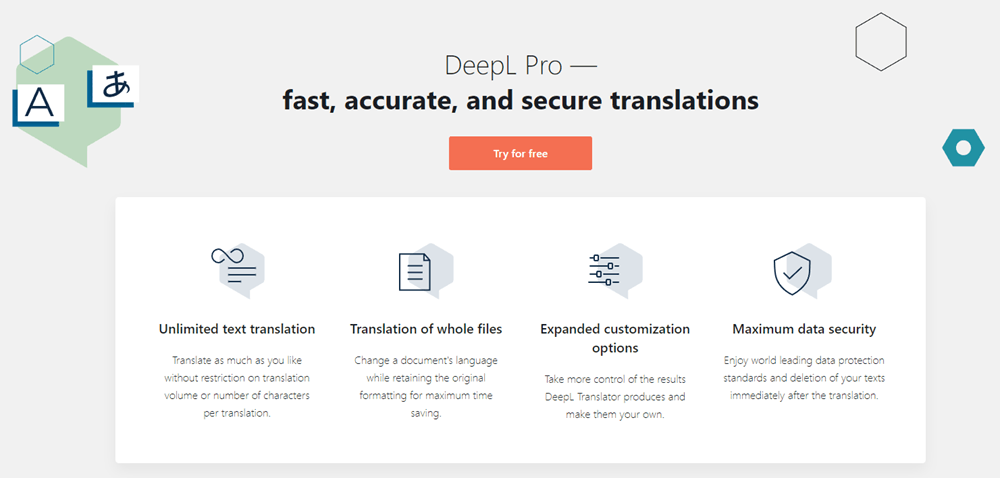
DeepL sets a new standard for machine translation. We are accustomed to machine translations that sound artificial and mechanical up until now since they are based on recurrent neural networks and word representations in the form of word vectors. Because of this, many people only occasionally, when traveling, etc., utilize Google Translate. DeepL is a revolutionary. Neural network-based algorithms are capable of translating material in a manner that is practically identical to that of a professional translator.
Deep learning is a technical term for an algorithm that uses numerous layers of information processing. The term “deep” describes how many layers of transformation the data goes through. This technology is powered by self-driving cars, virtual reality headsets, and face recognition software. And now DeepL is utilizing it in translation.
Prices and translation quality are similar to Google but the language available is more limited.
Microsoft translator for business
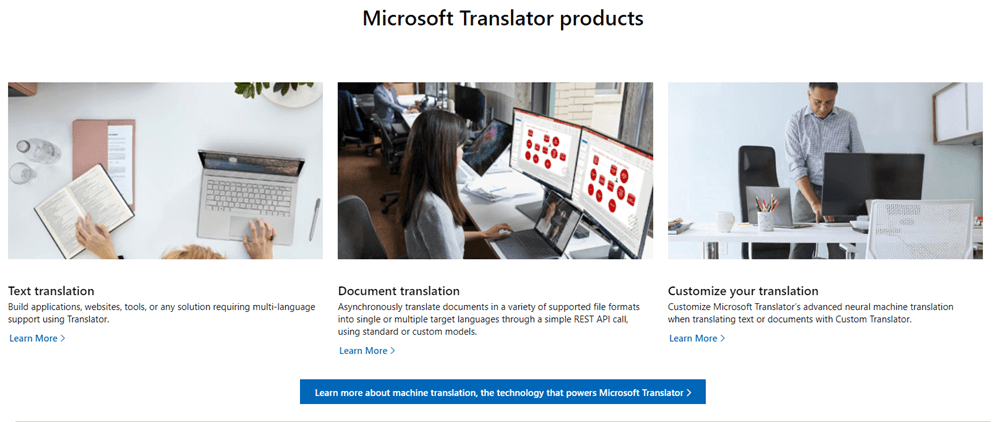
Microsoft Translator for business, an enterprise-grade software, enables you and your clients to rapidly and easily expand from test scenarios to fully fledged, international deployment and to effortlessly tailor your translations to conform to any specific industry jargon.
The Microsoft language translator includes a phrasebook, unlike the majority of other translation software. It includes the most widely used expressions for matters relating to travel, dining, crises, health, and technology. Although the phrasebook is not extremely comprehensive, it is nonetheless a useful option for someone also interested in learning a language.
You can also listen to every translation if you want to improve your pronunciation or language comprehension.
Microsoft Translator supports more than 70 languages. However, not all features are offered in those more than 70 languages. The Microsoft translation tool is more global with document translation, chat translation… and prices are $10 per billion of characters (half compared to Google) but quality and language number makes the difference.
SYSTRAN Translate PRO
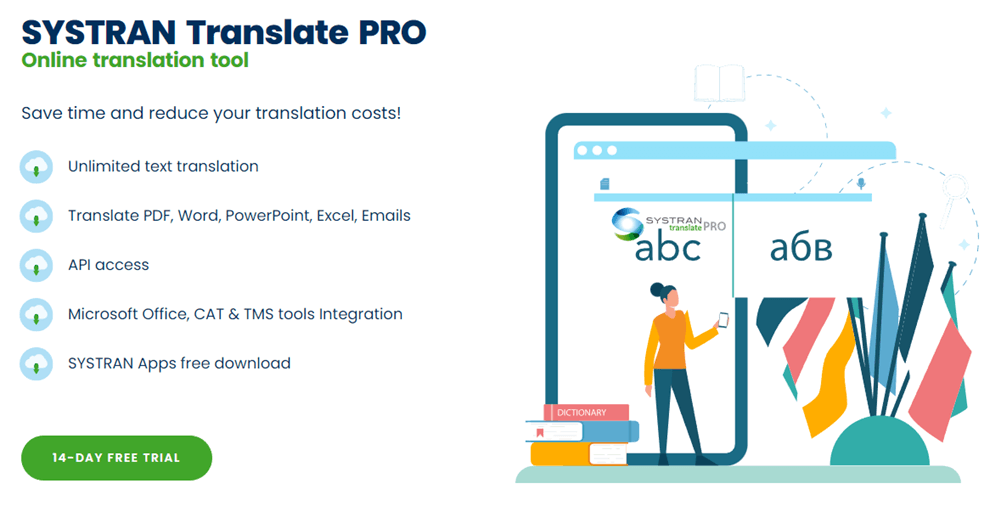
A professional translation program called SYSTRAN Translate Pro is cloud-based. It can translate text, documents (Word, PDF, PP, etc.), and web pages into more than 55 different languages and 140 different language combinations. SYSTRAN offers industry-specific translation models for local translations to translate material that is appropriate for the industry and business.
It’s safe to use SYSTRAN Translate Pro. Basic translations require little to no editing. Some technical fields benefited from years of research and development and little revision. The program allows you to efficiently translate entire documents in all popular formats while automatically identifying the language of the original document. SYSTRAN can translate text from websites and even photos into dozens of languages meticulously cataloged in their database, in addition to files and direct text input. Using specially created dictionaries can improve and tailor these abilities to your particular situation.
Prices are comparable to Google, languages available is also huge. What makes SYSTRAN Translate PRO interesting is that they offer an auto-hosted version!
Amazon Translate in AWS
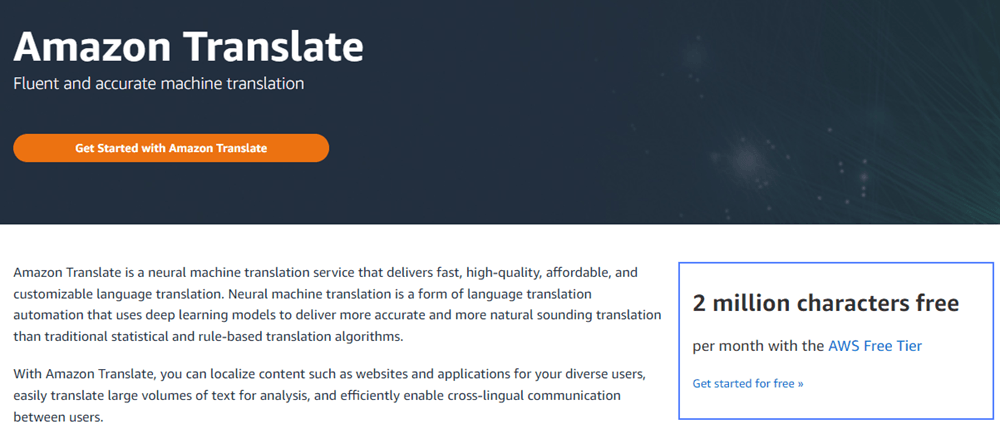
With its neural machine translation technology, Amazon Translate provides quick, below competitor accuracy, but it’s cost-effective! In contrast to conventional statistical and rule-based translation algorithms, neural machine translation uses deep learning models to provide a more accurate translation and sounds more human.
You can easily translate huge amounts of text for analysis with Amazon Translate, localize content like websites and applications for your multilingual users, and effectively facilitate cross-lingual conversation between users.
Constantly Improving, Amazon Translate is something to monitor in the upcoming years.
ModernMT machine translation

MMT is a customized, context-aware machine translation solution that gains knowledge from post-editing and translation memories as the translation procedure progresses. Because of its distinctive architecture, it can adjust to the content in real-time, providing context-sensitive MT suggestions as the translator type.
It also doesn’t need any setup or initial training; instead, it swiftly and easily picks up new information through translation memories and corrections. MMT ensures quick, accurate translation processes by learning from and adjusting to the input material.
The three-year Modern MT innovation action under Horizon 2020 (2015–2017) aims to create innovative, open-source machine translation technologies for usage in fully automatic translation production contexts and as a back end in interactive post-editing scenarios.
Reverso translation
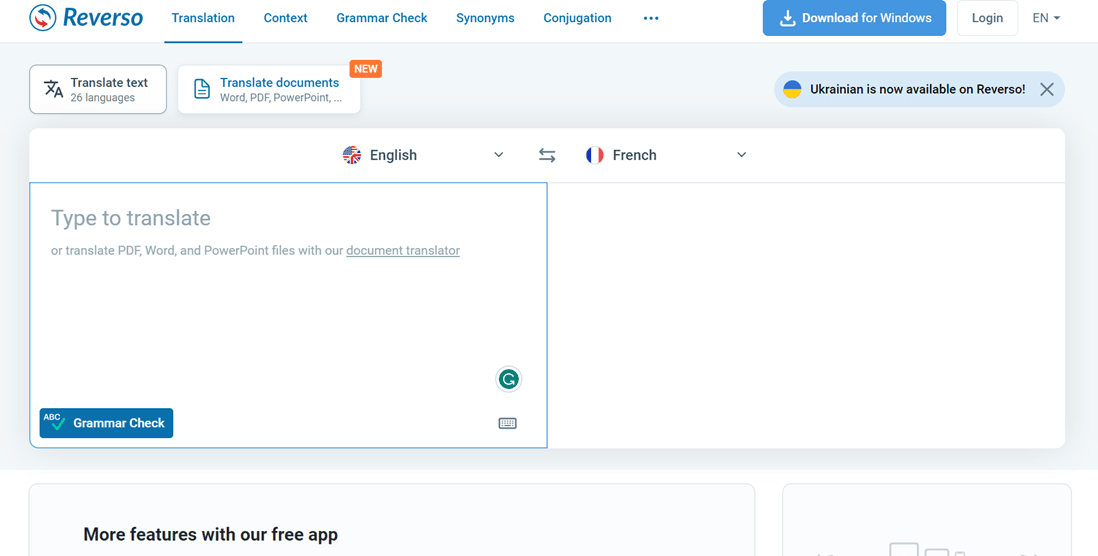
Reverso is a no-cost AI translation tool with the capacity to accommodate translations in 18 different languages. Within Reverso, you simply need to input text or verbally articulate words to obtain the translations you need.
In addition to its translation capabilities, Reverso serves as a valuable resource for users seeking to enhance their language proficiency and broaden their vocabulary. Translated texts are complemented by associated examples and explanations, fostering an environment for users to further refine their writing, speaking, and reading skills.
Some of the main features of Reverso is translation of documents, utilization of in-context examples, pronunciation guide, access to flashcards, review of search history, and compilation of vocabulary lists
Crowdin
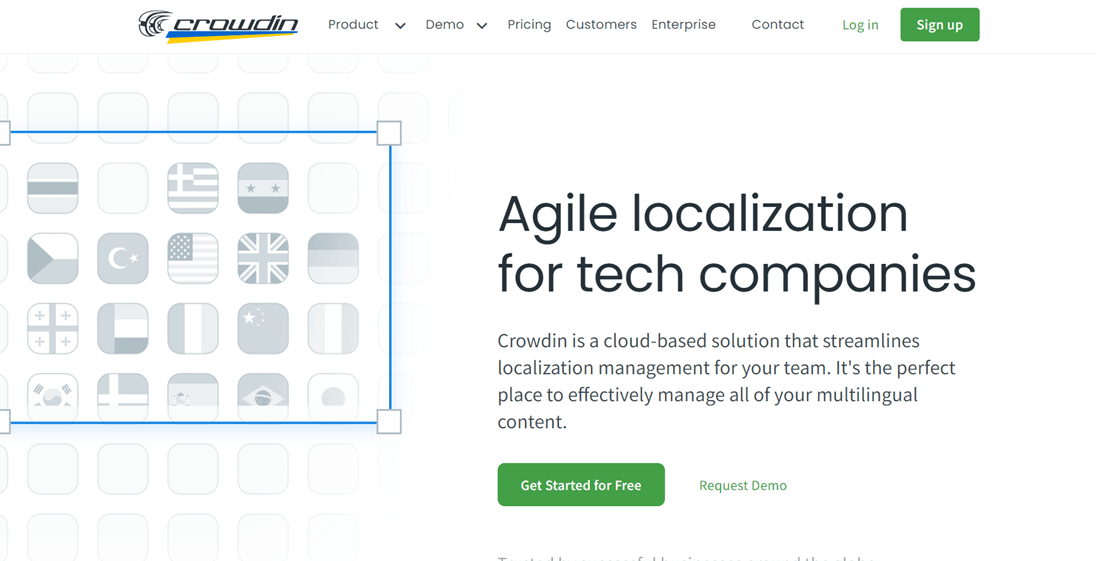
Crowdin is a translation and localization management platform designed to assist both businesses and individuals in translating a wide range of content into different languages. The platform provides a diverse set of tools and viewing options aimed at simplifying the translation process.
Crowdin is not a niche machine translation tool; rather, it encompasses comprehensive features such as task management, payment processing, and collaborative functions accessible to all team members. Consequently, Crowdin facilitates improved project delivery predictions and enhances communication within the team.
Key features of Crowdin is, delegating translation tasks, glossary integration, inbuilt translation memory, customizable translation memory, translation project management. Crowdin price starting from at $50.
Cost comparison table of best Neural Machine Translation software
After understanding each of the best neural machine translation software, this time we will provide a comparison table between each of these software. Here are some of them.
| Tools | Price |
|---|---|
| Google Translation AI | $20 / billion of characters |
| DeepL | $8,74 / month (depending on language) |
| Microsoft Translator | $10 / billion of characters |
| SYSTRAN Translate Pro | $5,41 / month |
| Amazon Translate | $15 / million characters |
| ModernMT Machine Translation | Start from $8 / million characters |
| Reverso Translation | $7,03 / month |
| Crowdin | $50 / month |
Linguise: alternative solution for Neural Machine Translation software

In addition to the NMT recommendations mentioned above, you can also use one of these tools, this is Linguise. Linguise translation is using mostly the Google solution but with many improvements on its side to translate all particular website HTML content. Additionally, to that, you can benefit from accessible prices, even for large websites, due to the volume of translation required by all our customer!
Linguise is making translation as a SaaS and is intended to assist websites in setting up automatic translations. Any PHP-based website, such as WordPress, Drupal, Magento, OpenCart, or any custom setup, can be integrated with Linguise. Instant translations in more than 80 languages will start working after Linguise is configured.
Linguise offers language perfect translation quality up to 98%. Each language has different qualities depending on the language pair. To find out more about the quality of the Linguise language, see more in the following table.
| NMT Translation | Human Translation | Quality | |
| English-Spanish | 5,428 | 5,550 | 97% |
| English-French | 5,295 | 5,496 | 96% |
| English-Chinese | 4,594 | 4,987 | 92% |
| Spanish-English | 5,187 | 5,372 | 96% |
| French-English | 5,343 | 5,404 | 98% |
| Chinese-English | 4,263 | 4,636 | 92% |
At Linguise, automatic translation works by harnessing the power of machine translation technology to translate website content.
Linguise will scan and identify website HTML content that needs to be translated. This includes text elements, titles, descriptions, and other relevant components.
When a user visits a website and requests content in a specific language, Linguise receives the translation request and then automatically translates the identified content. It sends the identified content to the translation engine for processing.
Linguise further improves its machine-translated content by making additional improvements and adjustments to ensure better quality and contextually appropriate translations. This includes adapting the translated text to the website’s specific tone, style, and requirements.
The improved translation is sent back to the website and displayed to the user in the requested language. Translated content seamlessly replaces original content on websites.
To be able to use neural machine translation in Linguise, you need to get started in the following few simple steps. Starting from adding a website domain in Linguise, select several languages that will be displayed.
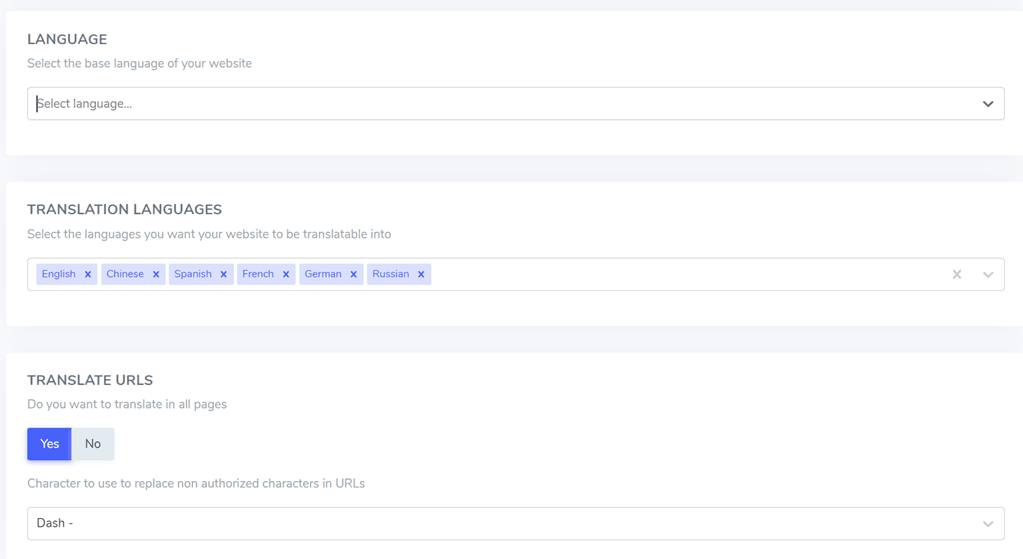
Then copy the API key from the dashboard and paste it into your CMS dashboard, for example in WordPress as follows.

After that, set the language switcher in the Linguise dashboard which will appear on your website.

If so, you can start translating websites automatically with Linguise.

Here’s a look into translating your website with Linguise:
Benefit of using Linguise automatic translation
Here are some of the benefits you’ll get when you use Linguise.
- Wider reach: If you are the website owner, we know that you are considering making your content available to readers outside the nations you typically write for. If you want to reach additional audiences by expanding worldwide or focusing on a particular region other than your primary one, you must build a bilingual website using Linguise.
- Good SEO ranking: Several people throughout the world will have confidence in your website and its contents. If you could additionally target consumers in many countries without a language barrier, you would gain in traffic, leads, and sales. Due to less competition, they will unquestionably favor your website over your opponents, raising your international SEO ranks.
- Customized translation: Linguise takes advantage of Google’s well-known NMT models to guarantee that your material is translated as accurately as possible. Additionally, you can customize a translation from the front end of your website if you think it might have been done better.
- Enhances with time: Linguise recognizes the context of the content it translates, establishes connections, and improves with each word it translates using neural machine learning.
- Exclusivity of content: You can also set up advanced translation rules in your account to specify the circumstances under which content should be replaced and excluded from translations. For instance, you can include or exclude text cases, HTML components, URLs, and languages from content that will be translated.
Conclusion
Many machine translation software and API are on the market, but few leaders are sharing the market. Using their data and API Linguise seems to be the right solution to implement for your website.
Automatic immediate neural translation is employed by some of the world’s biggest businesses. Now Linguise offers a quick, inexpensive solution that costs far less than manual translation service, making these benefits accessible to small and medium-sized organizations.




![Step-by-Step Laravel Localization [Guide]](https://www.linguise.com/wp-content/uploads/2024/10/FI_Step-by-Step-Laravel-Localization-768x320.png)